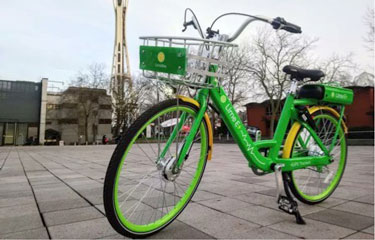Bike share programs have exploded in cities like Oakland, Washington, D.C. and Boston, Los Angeles and San Francisco.

The programs have been widely popular thus far, but to some, bike-share still seem like a highly public project that adds little to the public good. Indeed, concerns about safety and the potential to negatively impact businesses and existent transportation systems can outweigh perceived benefits.
But in practice, bike share is an affordable, healthy and environmentally friendly transportation source that augments city commerce and quality of life.
Here are five misconceptions about bike-share programs, and the reality behind the myth:
-
Myth 1: Bikeshare is for cyclists
This statement seems logical, but consider who is most likely to use a bikeshare system: probably not the person who already owns a bike, right?
Bikeshare is actually a great way for non-cyclists to be introduced to the health benefits of cycling, and instead of cannibalizing members from the current cycling community, it serves as an outreach tool to those who don’t own foot-pegs and a titanium bike-lock.
In cities with bikeshare, you see a surprising number of users in suits and skirts. Tourists and other day users can use the system in lieu of expensive taxi cabs or renting a car.
If anything, bike-share programs are the best way to encourage healthy, more environmentally friendly transportation habits in those to whom active transport may not come naturally.
-
Myth 2: Bikeshare is just for tourists
Cities with large bikeshare networks actually report that the majority of their users are frequent customers who use bikeshare as a commuting tool for work, errands and entertainment destinations. Instead of a novelty curio, think of bikeshare as a mode of transportation akin to busing.
Just like a bus, bikeshare stations are not everywhere, but they are plentiful enough that you can get just about anywhere with a few blocks of walking. Also like buses, bikes might not be available right when you want one, but before long, one will come along.
Understanding bikeshare as a personalized mode of public transportation is a smart way to recognize the widespread benefits of such a flexible and versatile system. And get this: in Washington DC, nearly 75 percent of users are annual members, and half of Boston’s riders are on high-value year long contracts.
In practice, bikeshare programs may gain the majority of their revenue from the relatively more expensive day passes, but that simply subsidizes cheap annual contracts for the bulk of users.
-
Myth 3: Bikeshare hurts public transportation
One worry is that bikeshare will decrease the quality and quantity of public transportation options by diverting public transportation revenue.
In fact, the most frequently used bikeshare stations are at the busiest public transportation stops, indicating that bikeshare is used as a supplement, not a replacement, to traditional transportation options. A person is more likely to use buses and trains when he or she uses bikeshare in conjunction with traditional public transportation because biking can help cut out awkward transfer times and straighten out indirect routes.
-
Myth 4: Bikeshare is unsafe
If non-cyclists are flooding the road, it stands to reason that safety would be an issue. But Boston’s program reports a lower incidence of bicycle crashes amongst bikeshare users than in the larger cycling community.
The reason isn’t clear: perhaps it’s because bikeshare bikes are slower and more upright than private bikes, or because bikeshare users are generally less aggressive, or maybe it’s a natural aversion to wrecking property owned by someone else.
Whatever the reason, relative to the general population, bikeshare users are at no greater risk. Drivers may object to having more cyclists on the road, but remember: that’s just one fewer car you’re stuck behind at a stoplight.
-
Myth 5: Bikeshare Programs Increase Accident Rates
Some assume that the introduction of bikeshare programs leads to an increase in bicycle accidents. While accidents can happen, studies have shown that bikeshare programs do not significantly increase accident rates. In fact, as more people use bicycles for transportation, cities often invest in improved infrastructure and safety measures, promoting a safer cycling environment for everyone.
-
Myth 6: Bikeshare hurts businesses
Sometimes bikeshare stations and accommodations for cyclists (like bikelanes and car-free zones) decrease the number of parking spaces or roadways outside businesses. This can lead to the misconception that bikeshare hurts businesses.
But a bike station holding ten bikes can fit in the space needed for just two parking spaces. In some areas of Boston, that translates to 25-35 trips in and out of that station per day, bringing a good deal more people to a business storefront than traditional parking spaces.
GJEL Accident Attorneys: Your Bikeshare Accident Experts
Bikeshare programs can be a safe and convenient transportation option when used responsibly. However, accidents can still happen. If you or a loved one has been involved in a bikeshare accident in Northern California, our experienced personal injury attorneys at GJEL Accident Attorneys can help you navigate the legal process and secure the compensation you deserve.
Don’t wait to get the legal help you need after a bikeshare accident. Contact GJEL Accident Attorneys today for a free consultation and let our knowledgeable personal injury attorneys advocate for your rights.

